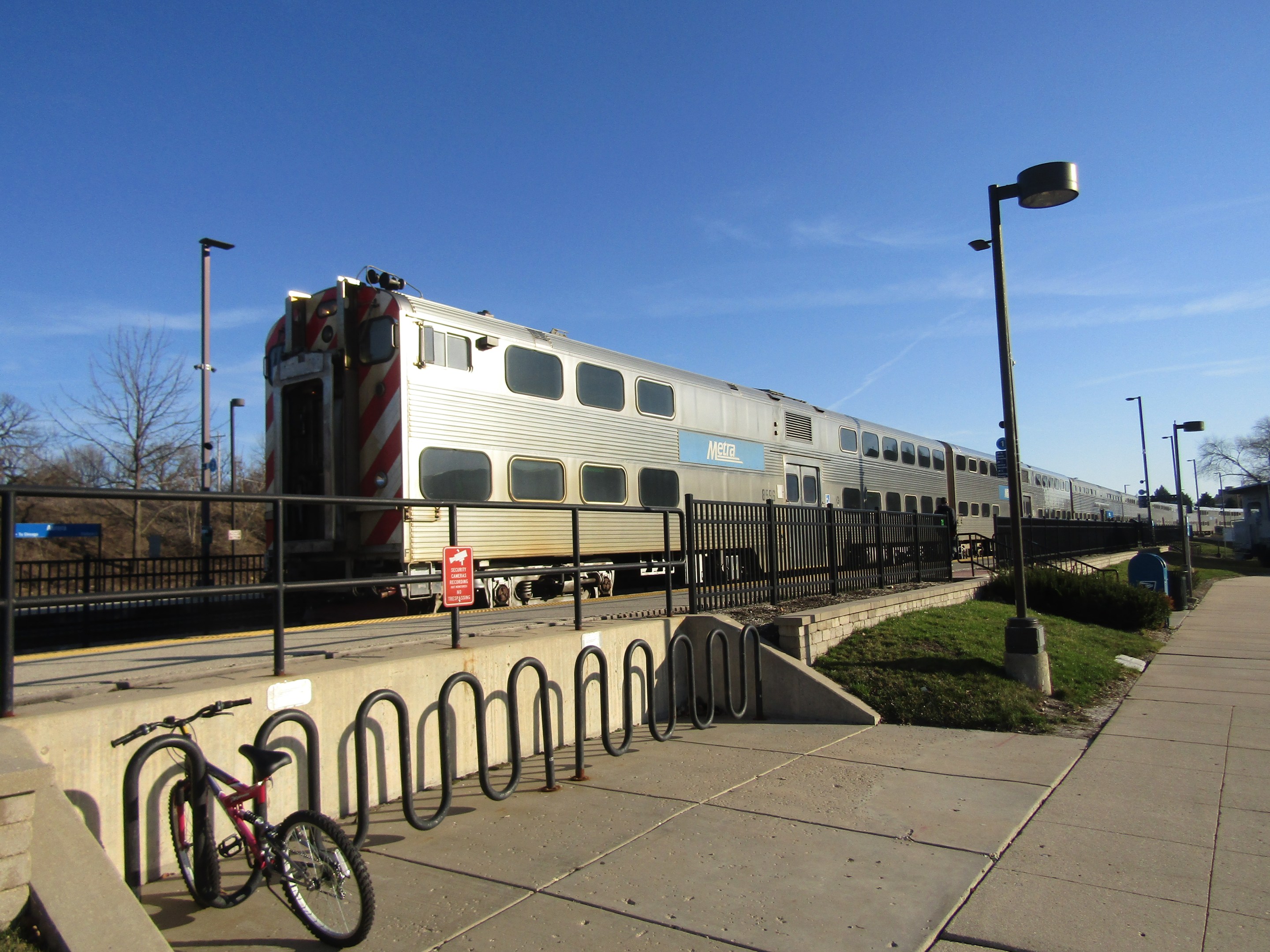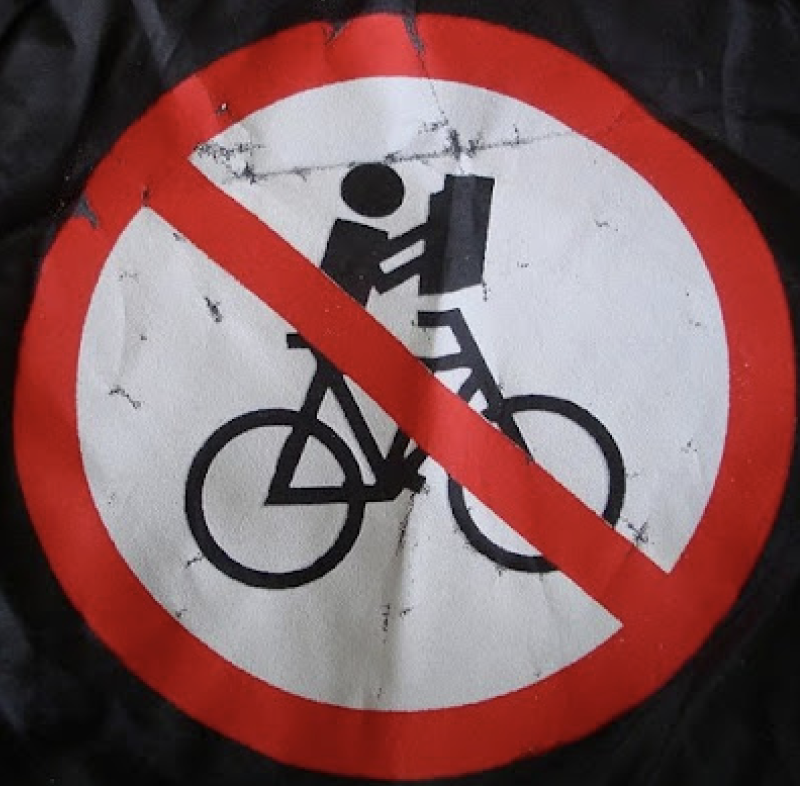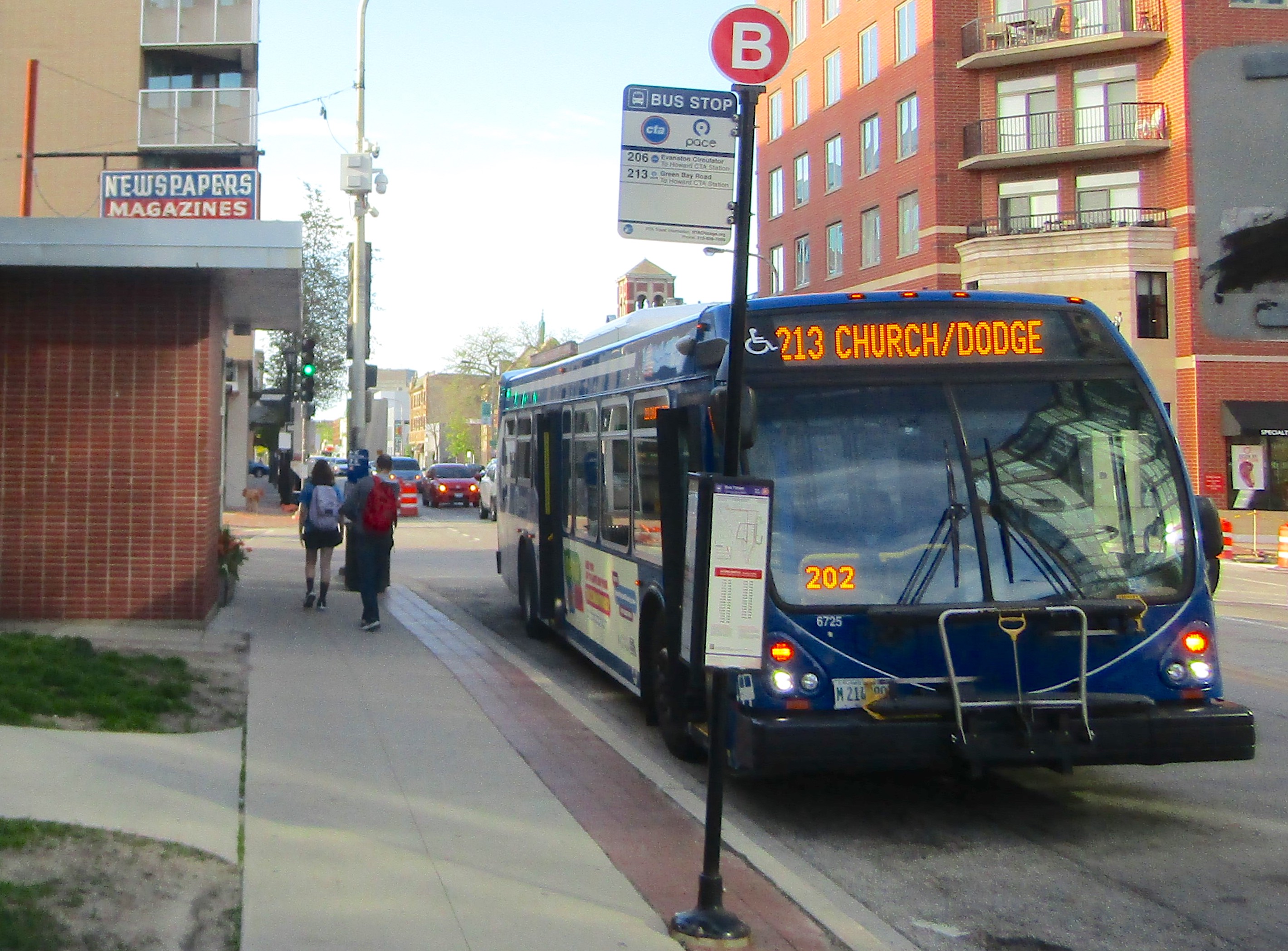Metra schedule pilots to bring biggest service increases to wealthier suburbs
9:06 PM CDT on June 11, 2021

An Inbound BNSF Line train waits at Aurora Transportation Center in late March. Photo: Igor Studenkov
When Metra recently announced schedule changes for the BNSF, Metra Electric (MED), Rock Island District (RID) and Union Pacific North (UP-N) lines, which will take effect on July 12, they billed it as “step[ping] away from pre-pandemic schedules that prioritized peak rush-hour service in favor of a more balanced approach that spreads out the service to offer better off-peak options.” But the reality was a bit more complicated than that.
MED’s pilot schedule was mostly mild tweaks, and even the more substantial changes didn’t change the schedule much. BNSF and RID got more off-peak service, and BNSF got more late night service within Chicago. But all that was nothing compared to the UP-N changes, which significantly beef up service in the city and the North Shore suburbs that aren’t exactly starved for transit. Most notably, the CTA Purple Line and Pace Route 213, which have similar service frequency, run parallel to portions of the UP-N line in the very suburbs that are getting the service bump.
Both MED and RID are part of the Fair Transit South Cook pilot, which seeks to make Metra a more viable transit option for riders by bringing the fares more in line with ‘L’ fares. Despite the fare reductions, another major barrier is infrequent service (or headways), which is something that the pilot schedules only partially address.
BNSF
The line runs between Chicago and Aurora. The BNSF line is unusual among Metra lines because it had multiple outbound express trains during the morning rush hours and inbound express trains the afternoon rush hour. In Chicago, the line has a Halsted Street station near University of Illinois at Chicago’s south campus and a Western Avenue station in Pilsen.
Under the current schedule, the rush hour headways average out to 10-20 minutes for people commuting in the direction of rush-hour traffic, and 20-30 minutes for reverse rush hour commuters. Off-peak trains have two-hour headways.
The new schedule will add morning and afternoon rush-hour trains in both directions: outbound morning trains would run every 20 minutes and afternoon inbound rush hour trains would run every half an hour. The average off-peak service headways would decrease to one hour. Two late evening round trips would be restored, but unlike before the pandemic, those trains will stop at Halsted and Western.
The changes will restore outbound evening service to pre-pandemic level, while inbound evening service will become more frequent than before the pandemic. And they will beef up mid-day off-peak service. And while before the pandemic the express service was kind of all over the place in terms of how far each train would go and how many stops it would amke, the pilot schedule creates a consistent, staggered pattern, similar to what the Metra Electric had before the pandemic.
Metra Electric
The main branch of the Metra Electric line runs between Chicago and suburban University Park, serving several South Side neighborhoods along the way, many of which have no ‘L’ service. The South Chicago branch serves the South Shore and South Chicago neighborhoods, and the Blue Island branch serves the West Pullman and Roseland neighborhoods and suburban Blue Island. Before the pandemic, Hyde Park, which is served by trains from all three branches, had 6-20 minute headways during rush hours and 20-30 minute headways during off-peak hours.
Under the current schedule, inbound rush hour headways range between 20-30 on the main branch and 20-40 minutes on South Chicago branch, with only three inbound rush-hour trains serving the Blue Island branch. The Hyde Park rush-hour headways are similar to the pre-pandemic schedule. Off-peak trains run an average of once an hour for the main line and South Chicago branches (except for the two-hour early afternoon service gap within the city), an average of 30 minutes for Hyde Park, and nearly two hours on the Blue Island branch.
The new MED schedule makes fewer changes than any of the other planned schedule adjustments, most of which involve shifting arrival times by a few minutes. The most notable changes included removing the late evening outbound trip to Blue Island that left 63rd Street at 9:49 p.m. and arrived at Blue Island at 10:22 p.m., adding a morning trip to South Chicago to maintain half-an-hour frequency between 8:00 a.m. and 9:00 a.m.
Rock Island District line
The RID line is one of the two lines that run between Chicago and Joliet. Like the Metra Electric, it has a significant number of stations in Chicago, serving Bridgeport/Bronzeville and Auburn Gresham. The Beverly/suburban branch splits off the main line to serve the Far Southwest Side’s Beverly and Morgan Park neighborhoods before rejoining the main line in Blue Island, Illinois. However, most trains that use the Beverly branch don’t go past Blue Island, so riders traveling from, for example, Joliet to the 95th Street/Beverly station usually need to transfer trains.
Under the current pandemic schedule, rush-hour headways range anywhere between 30 minutes to an hour per branch, while off-peak headways range between 1-2 hours per branch. For the Blue Island and 35th/Lou Jones stations, the headways are 9-30 minutes during rush hours and 50 minutes to an hour off-peak.
The new schedule will create more consistent headways, ramping up off-peak service frequencies while reducing some rush-hour frequencies. The headways for each branch would mostly be once an hour, with inbound rush-hour trains and outbound rush-hour trains running once every 30 minutes. Blue Island to downtown headways would be 20 minutes during rush hour and 41 minutes off-peak. The schedule changes will also restore two pre-pandemic late evening trains in each direction, though the timing is changed to, again, create more consistent headways.
In the end, the service would be somewhat less frequent than before the pandemic, when rush-hour headways for branches were often closer to 20-25 minutes.
Union Pacific North line
The UP-N line runs between Chicago and Kenosha, Wisconsin, though most of the trains run between Chicago and Waukegan. The line makes stops at the Clybourn, Ravenswood and Rogers Park stations in Chicago proper. The Main Street and Davis Street stations are notably redundant to the Purple ‘L’ line's eponymous stops.
While the other new schedules mostly tinker with service frequencies and express service, the UP-N changes introduce a significant adjustment to the existing service patterns that has the net effect of ramping up service frequency between Chicago and Winnetka. Between 6 a.m. and 7 p.m. trains will stop at Clybourn, Ravenswood, Rogers Park, Davis, Wilmette, and Winnetka at least one every half an hour in both directions, with frequency increasing to every 10-20 minutes for rush-hour inbound morning trains and outbound afternoon trains.
By comparison, under the current schedule, the headways between those stations can range between 1-2 hours. Before the pandemic, the frequency was closer to one hour during off-peak hours. As with other pilots, most pre-pandemic late evening trains would be restored (except the last inbound train of the night, which left Kenosha at 11:45 p.m.)
While both before and during the pandemic, most trains didn’t originate or terminate at Winnetka, under the new schedule, nearly half of them will.
The new schedule will also reduce service north of Waukegan. Before the pandemic, nine trains traveled the full length of the line in each direction. The current schedule reduces that to six, but it still provides mid-day and evening options. The pilot will further reduce that to five trips, with four of them running inbound in the morning and outbound in the evening. The schedule is less convenient for anyone reverse-commuting to Kenosha, since the morning train arrives at 6:58 a.m. instead of 8:25. The last inbound train leaves Kenosha at 5:43 p.m., which, without the aforementioned 11:45 p.m. train, doesn’t leave time for any Friday night visits.
Beefing up service to Winnetka is notable because Pace Route 213 runs parallel to the Union Pacific Line between Evanston and Winnetka (and continues running parallel as far north as Braeside). Those routes run every 15 minutes during the rush hour and once every half an hour until the evening (when the frequency drops to once an hour). Metra service is faster – the trip between Davis and Winnetka stations takes 8-15 minutes (depending on how many stops it makes) and 20 minutes by bus – but Route 213 is cheaper and it serves more intermediate stops.
Stay in touch
Sign up for our free newsletter
More from Streetsblog Chicago
Elevated Chicago’s new leader on how to build more support for equitable transit-oriented development
Recently announced as executive director Juan Sebastian Arias also shared his POV on Mayor Johnson's Cut the Tape initiative to speed up the development approval process
Since COVID, Pace ridership has fared better on major corridors and in north, northwest suburbs than in south, west ‘burbs
The suburban bus system's top five busiest routes largely maintained their ridership rankings.



